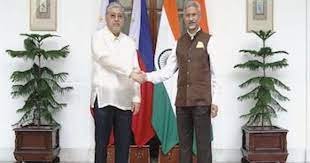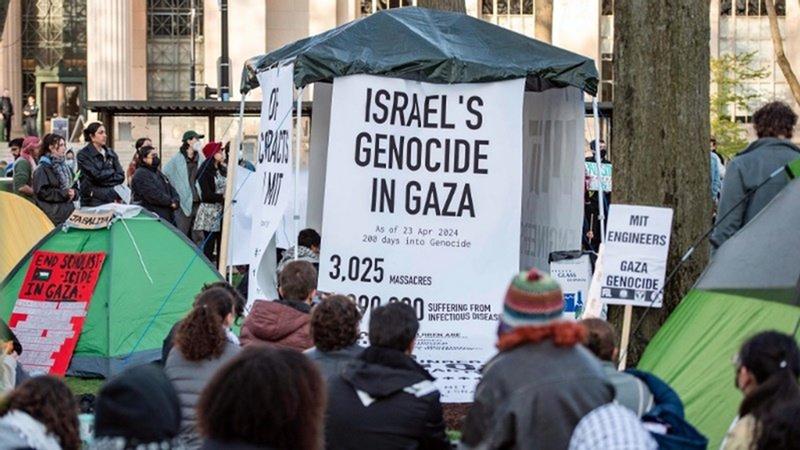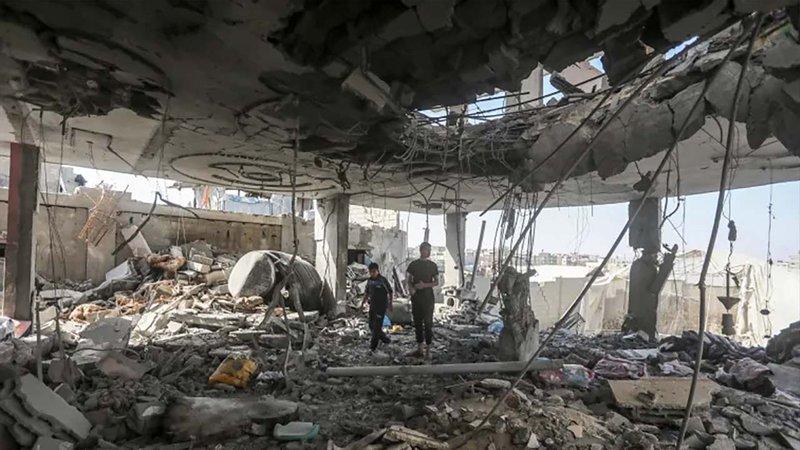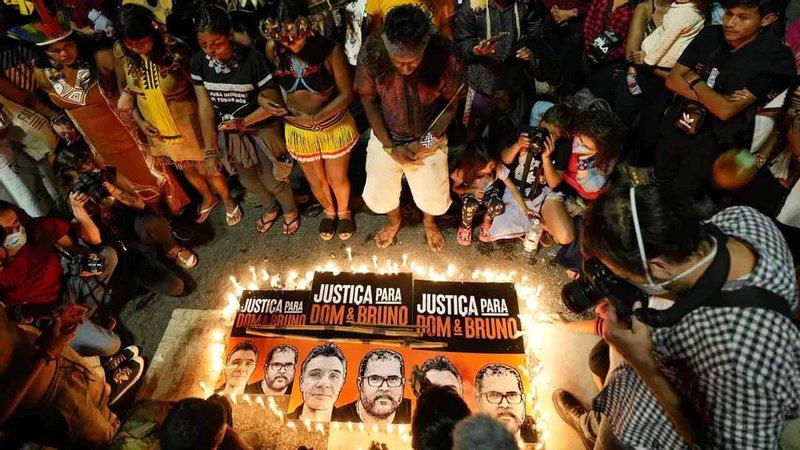India’s deepening ties with the Philippines and its growing relevance in Southeast Asia is expedient for the US-led democratic order

photo: collected
The four-day visit to New Delhi by Enrique A. Manalo, the Secretary for Foreign Affairs (SFA) of the Philippines, at the end of June elicited more than its fair share of interest not only across South and Southeast Asia, but equally as much in Washington DC and in Beijing. That said a lot, given that Manalo’s was not a high-profile visit by a head of State or government. Xinhua, joined by other State-owned Chinese media outlets, commented sharply on the decision taken at the meeting between Manalo and India’s External Affairs Minister (EAM) S. Jaishankar to further strengthen the bilateral partnership in areas such as defense, security, maritime cooperation, space, trade and investment, among others. They also noted that the two foreign ministers had co-chaired the 5th meeting of the Joint Commission on Bilateral Cooperation. The United States (US)-based Rand Corporation and other democracy-oriented institutions, on the other hand, pointedly underscored India’s articulation, for the first time in such unambiguous terms, of the need for adherence to international law, especially the United Nations Convention on the Law of the Sea (UNCLOS) and the 2016 Arbitral Award on the South China Sea. They also highlighted how India’s appeal and stock across Southeast Asia had risen over the past few decades, and the country was now viewed as an important and welcome partner. This trend, they rightly felt, would only work to the advantage of the US, and therefore ought to be encouraged by it.
Manalo's talks with Jaishankar, as per official statements, had been wide-ranging and had covered the entire gamut of bilateral relations. Jaishankar described the talks as “productive and comprehensive”, and tweeted that “Our agenda today covered defence, maritime security, counter-terrorism and transnational crimes. As also our growing economic ties, including in trade & investments; development cooperation; health & pharma; tourism; air services; agriculture; fintech; S&T and space cooperation”.
In an article that he wrote for leading Indian dailies while he was in New Delhi, Manalo asserted that the Philippines and India were aiming “for a transformative 21st century partnership”. He further wrote that “the Philippines and India have embarked on a fresh page in our cooperation, after almost three years, to reinforce our bilateral ties, as we seek economic resurgence and resilience in the post-pandemic era…This remarkable zeal by which our two governments are reshaping the contours of the relationship across its many aspects, is also driven by our engagements within the framework of ASEAN, which enjoys a constructive dialogue partnership with India, and India’s ‘Act East Policy’, which aims to strengthen economic, strategic, and cultural relations in the Indo-Pacific region. To harness the power of the Indo-Pacific as a catalyst for growth, more intensified regional cooperation is essential. Stronger economic integration, improved connectivity, and increased innovation are key to buttressing the region as a global economic powerhouse. As champions of the rule of law and inclusive multilateralism, the Philippines and India play important roles in this respect”.
Speaking at the Indian Council of World Affairs (ICWA) think tank, Manalo termed India as a key defense partner of the Philippines. He stressed that “We certainly view our defence partnership with India as one of the brighter aspects of our mutual relationship. I am not talking about the distant future but in the near term. We hope to develop very robust defence cooperation arrangements with India. We have already entered into some potential deals and I think we will be looking forward to having more”. In January last year, the Philippines had concluded a $375 million deal with India for the procurement of three batteries of the BrahMos cruise missile from it.
One commonality, though certainly not the only one, that has drawn the Philippines and India closer is the threat posed by China. As Sreemoy Talukdar pointed out in his opinion piece for Firstpost, “What emerged from the joint statement issued by India and the Philippines, and other engagements by the Filipino foreign secretary during his stay, was a series of important signals that underline the challenge posed by China as an expansionist military power, and how the countries around it are grappling with and countering Beijing’s malevolent attempts to carve out a unipolar Asia”. The joint statement, in the section on ‘regional and multilateral issues’, said pointedly that Jaishankar and Manalo had “underlined that both countries have a shared interest in a free, open and inclusive Indo-Pacific region. They underlined the need for peaceful settlement of disputes and for adherence to international law, especially the UNCLOS and the 2016 Arbitral Award on the South China Sea in this regard”.
Talukdar noted that this was the first time India has explicitly called for China’s adherence to the 2016 Arbitral Award under UNCLOS by the UN’s Permanent Court of Arbitration that had dismissed “China’s so-called ‘nine-dash line’ — a figment of CCP’s imagination through which Beijing claims the resource-rich South China Sea almost in entirety — and supported the Philippines’s position on the territorial dispute”. Beijing had refused to accept the ruling and termed it “null and void”. The ruling has had no effect as China continues to badger smaller neighbours into acquiescing to its revanchist demands. In 2016, India had merely “noted” the arbitration ruling in a cautious statement. In subsequent years, through several statements, India has remained committed to a free, open and rules-based order, and promoted the inviolability of UNCLOS. This time, however, India has deviated from generic statements to take a principled position on the 2016 Arbitral Award that had found China’s acts and claims on South China Sea “unlawful”.
Talukdar pointed out that the consequential shift in India’s position was linked directly to the Sino-Indian border dispute and its incremental hardening of stance against China, who New Delhi accuses of trying to unilaterally change the status quo at the Line of Actual Control (LAC) that separates the two countries. India is sending a signal to China that unless it honours the agreements signed between both sides and status quo is restored, bilateral relationship will get increasingly jeopardised. “This is India directly telling China to ‘back off’”, he concluded. The evolution of the Philippines’ stance against China, he felt, was sharper, starker, and demanded even greater attention.
Aaron-Matthew Lariosa suggested in his 5 July analysis in US Naval Institute (USNI) News that the hardening of India’s position on the South China Sea issue had coincided with its increased security engagement with countries in Southeast Asia. It quoted Raymond Powell, Project Myoushu lead at Stanford University, as saying that while India has previously “committed to a non-aligned position and is reluctant to take sides in issues involving major power competition”, the country also “recognizes that China is the only major power that poses a direct threat to its security interests, both on its border and in the Indian Ocean. Supporting the 2016 arbitral tribunal decision enables India to take a principled position in support of international law without aligning with any of the great powers, while still supporting its own national security interests”.
In a 10 July commentary in The Rand Blog titled India Is Becoming a Power in Southeast Asia, Derek Grossman, senior defense analyst at the RAND Corporation and adjunct professor at the University of Southern California, opined that “The moment has been long in coming, but India is turning into a strategic actor in Southeast Asia. Amid a flurry of regional diplomacy, India has sealed an arms deal with Vietnam, sided with the Philippines over China on sovereignty disputes in the South China Sea, and enhanced defense cooperation with Indonesia. It is balance-of-power politics worthy of an international relations textbook: Even though most Southeast Asian governments have long made it their mantra not to choose geopolitical sides, China's aggressive posture in and around the South China Sea is driving India and its partners in the region together. As yet, none of these relationships are on the level of alliances or include a serious force deployment component, but the trend is clear. And even though the United States and its Asian treaty allies are not involved, India's moves raise the tantalizing possibility that it will increasingly complement the United States’ Indo-Pacific strategy to counter China in the coming years”.
Grossman pointed out that in recent years India had steadily strengthened key partnerships across Southeast Asia, particularly with countries along the maritime rim of the Indo-Pacific. These moves were clearly designed to cooperate with Southeast Asian partners who also seek to maintain the rules-based international order and norms of behavior in the face of rising Chinese assertiveness in the region. He elaborated, “These recent moves reinforce the ‘comprehensive strategic partnership’ India and Vietnam have maintained since Prime Minister Narendra Modi’s 2016 visit to Vietnam. Hanoi maintains just four partnerships at this highest of levels—with China, India, Russia, and most recently South Korea. That underscores the high strategic value Hanoi places on New Delhi. By comparison, the United States is only a ‘comprehensive partner’ for Vietnam, two levels below India’s status. Washington has struggled to raise the partnership”.
Grossman also noted that India’s security partnership with Indonesia had quietly been evolving in ways that also supported the US’ Indo-Pacific strategy. He wrote, “Indo-Indonesian defense relations truly kicked off in 2018, when Modi visited Jakarta and elevated relations to a comprehensive strategic partnership. As part of this, the two nations signed a new defense cooperation agreement… New Delhi and Jakarta are exploring potential air force cooperation as well. Indonesia may also follow in the footsteps of the Philippines by purchasing BrahMos missiles. On the economic side, the two nations are considering a preferential trade agreement, similar to what India is discussing with Vietnam and the Philippines”. Further, India was also cooperating with Malaysia, another counterclaimant against China in the South China Sea, on the basis of an enhanced strategic partnership signed in 2015. Brunei was another emerging partner for India along the South China Sea. In 2021, the two nations renewed their defense agreement for five years, and they regularly engage in joint exercises, port visits by navy and coast guard ships, and official defense exchanges.
As for other countries in Southeast Asia, India’s strategic partnerships with Singapore and Thailand are also close and longstanding. Singapore regularly engages in bilateral exercises, high-level dialogues, visits, and professional training with India. In 2022, Thailand and India took stock of their partnership and pledged to elevate defense engagements further, to include cyber security. Perhaps of greater importance is the economic side of their relationship. Moreover, Thailand and India are partnering with Myanmar to construct the India-Myanmar-Thailand Trilateral Highway that will significantly upgrade transport links between Southeast Asia and South Asia. Once the highway is completed, India also wants to add connections to Cambodia, Laos, and Vietnam. Further, India also has good relations with both Cambodia and Laos. This is quite remarkable, as both Phnom Penh and Vientiane are widely considered to be firmly in China’s camp.
From the US perspective, there is merit in the RAND Corporation’s recommendation that India’s outreach to Southeast Asia be actively encouraged by Washington, but even if it is sustained at current levels it will only further undermine Beijing, which, in and of itself, is a big win for the US and its allies.















